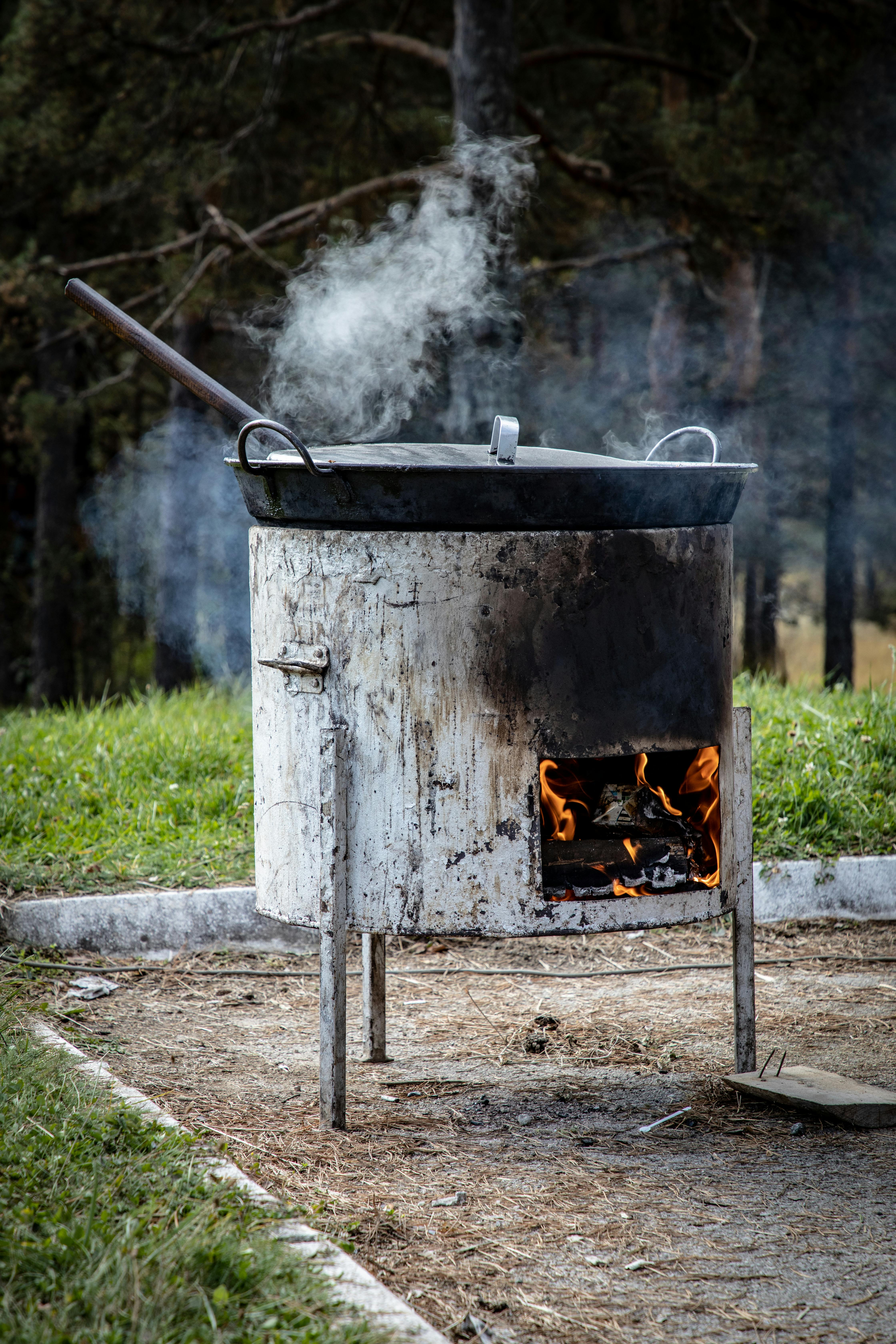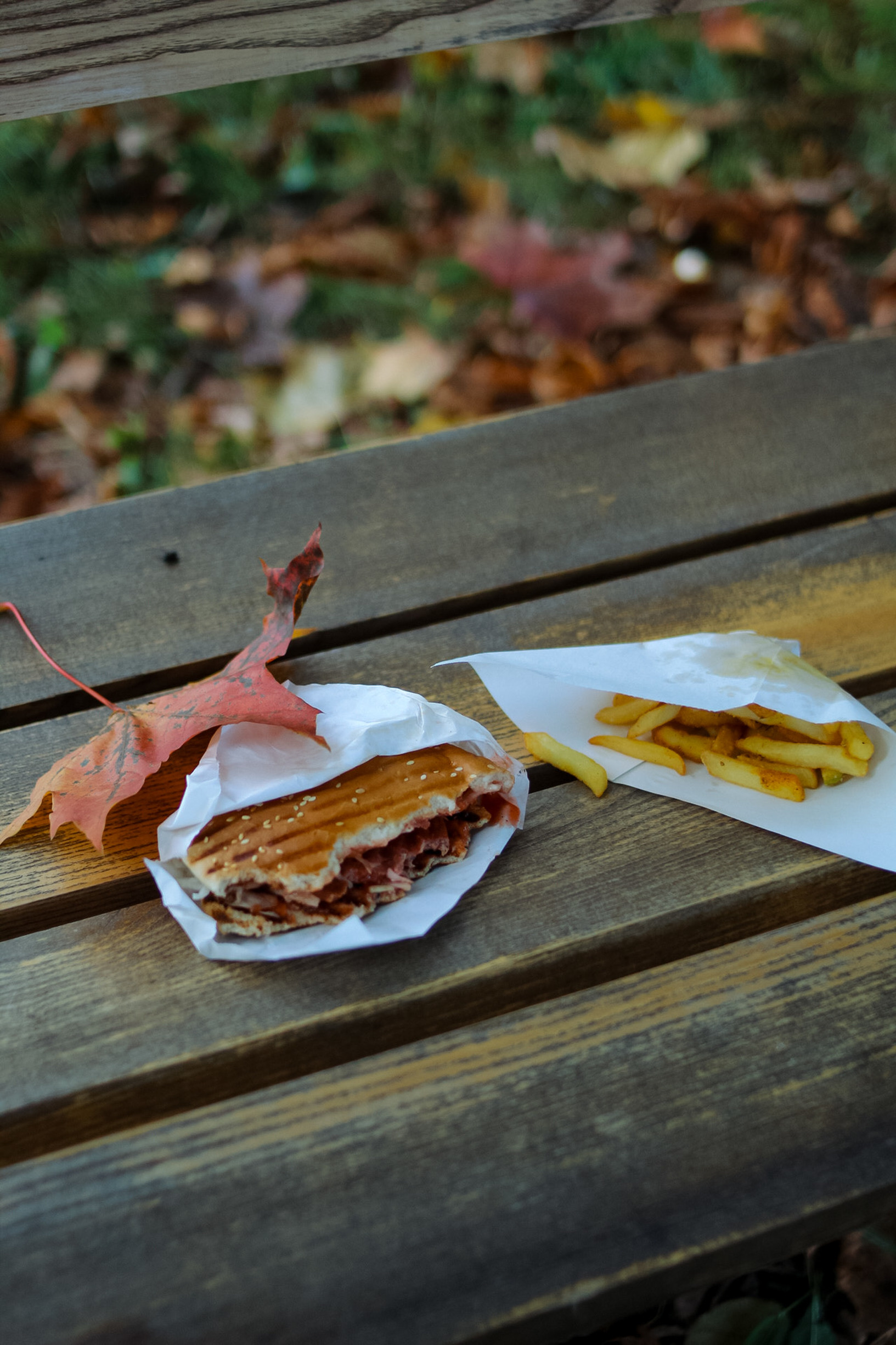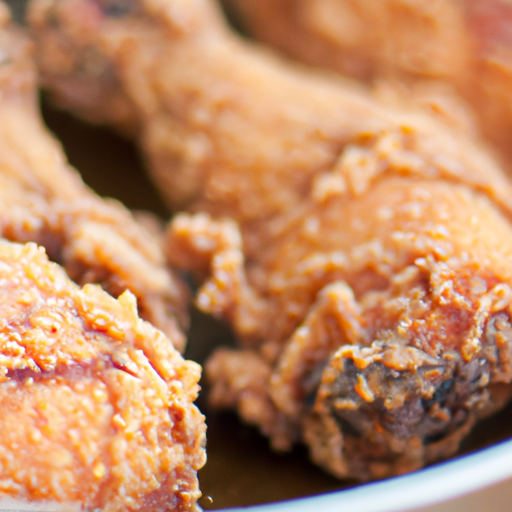Ready to take your cooking skills to the next level? Look no further! Tastepan has got you covered with expert tips and techniques for achieving the perfect pan-fried dish that is both golden and crispy. Whether you’re a novice in the kitchen or a seasoned home chef, our comprehensive guides and videos will help you master the art of pan-frying, ensuring delicious results every time. With our step-by-step instructions and insider secrets, you’ll be able to elevate your culinary creations and impress your friends and family with your newfound skills. So get ready to sizzle, because the perfect pan-frying awaits you!

Choosing the Right Pan
When it comes to pan-frying, selecting the right pan is crucial for achieving that perfect golden and crispy result. There are a few factors to consider when choosing a pan, including the material, size, and shape.
Material
The material of the pan can greatly affect the cooking process and the final outcome of your dish. Some popular options for pan materials include stainless steel, cast iron, and non-stick coatings.
Stainless steel pans are durable and distribute heat evenly, making them a versatile choice for pan-frying. Cast iron pans are known for their excellent heat retention and even heating, which can result in a beautifully crispy exterior. Non-stick pans are convenient for easy cleanup, but they may not provide the same level of browning as stainless steel or cast iron.
Size
The size of the pan should be chosen based on the amount of food you plan to cook. If the pan is too small, overcrowding the ingredients can prevent them from crisping up properly. On the other hand, a pan that is too large may cause the oil to spread thinly, resulting in uneven cooking.
Consider the size of your stovetop burners as well. Make sure the pan fits comfortably on the burner without any heating elements being exposed beyond the pan’s base.
Shape
The shape of the pan can also influence the cooking process. A skillet with slanted sides allows for easy flipping of ingredients, while a straight-sided sauté pan provides a larger surface area for searing multiple ingredients.
Consider the type of food you’ll be cooking and choose a pan shape that best suits your needs. It’s always a good idea to have various pans of different shapes and sizes in your kitchen arsenal to accommodate different dishes.
Preparing the Pan
Before you start pan-frying, it’s important to prepare the pan properly. This includes cleaning, seasoning, and preheating.
Cleaning
Ensure that your pan is thoroughly clean before you start cooking. Any residue or leftover particles from previous meals can affect the flavor and texture of your dish. Use warm water, mild dish soap, and a soft sponge or cloth to clean the pan. Avoid abrasive materials that could damage the surface.
Seasoning
If you’re using a cast iron or carbon steel pan, seasoning is a crucial step. Seasoning involves adding a layer of oil to the pan and heating it to create a natural non-stick surface. This process enhances the pan’s performance and helps prevent food from sticking.
To season a cast iron or carbon steel pan, apply a thin coat of oil to the entire surface, including the handle, and heat it over medium heat for about 10-15 minutes. Repeat this process a few times to build up the patina.
Preheating
Preheating the pan is essential for achieving that beautiful sear and crispy texture. Heat the pan over medium-high heat for a few minutes before adding any oil or ingredients. This ensures that the pan is evenly heated and ready to cook your food to perfection.

Selecting the Perfect Oil
Choosing the right oil for pan-frying can greatly impact the flavor and texture of your dish. Consider factors such as smoke point, flavor, and health considerations when selecting your oil.
Smoke Point
The smoke point of an oil is the temperature at which it starts to smoke and degrade. For pan-frying, it’s essential to choose an oil with a high smoke point to prevent it from burning and imparting a bitter taste to your food.
Oils with high smoke points include avocado oil, peanut oil, and refined safflower oil. These oils can withstand high heat without smoking or breaking down, allowing you to achieve that perfect golden color and crispy texture.
Flavor
The choice of oil can also impact the flavor of your dish. Some oils, like extra virgin olive oil and sesame oil, have distinct flavors that can enhance certain types of cuisines. Consider the flavor profile of your dish and choose an oil that complements it.
Neutral-flavored oils like canola oil and vegetable oil are versatile options that won’t overpower the taste of your food. They are also commonly used for pan-frying due to their high smoke points and affordable prices.
Health Considerations
While high-quality fats are an essential part of a balanced diet, it’s important to consider health considerations when selecting your pan-frying oil. Oils high in saturated fats, such as coconut oil or palm oil, should be used in moderation.
Healthier options include oils high in monounsaturated fats, like avocado oil and olive oil. These oils have been linked to various health benefits and can be a better choice for those conscious about their fat intake.
Prepping the Ingredients
Properly prepping your ingredients is key to achieving that perfect golden and crispy result. There are a few steps you can follow to optimize the texture and flavor of your food.
Slicing and Drying
If you’re working with ingredients like meat or vegetables, it’s important to slice them into uniform pieces. This ensures even cooking and prevents some pieces from overcooking while others remain undercooked.
Additionally, drying your ingredients before adding them to the pan helps remove any excess moisture that could interfere with browning. Pat them dry with a clean kitchen towel or paper towels, especially for ingredients like tofu or chicken that tend to retain moisture.
Seasoning and Marinating
To enhance the flavor of your pan-fried dish, consider seasoning or marinating your ingredients before cooking. Seasonings like salt, pepper, herbs, and spices can add depth and complexity to your dish.
If time allows, marinating your ingredients for a few hours or overnight can infuse them with extra flavor. Marinades typically consist of a combination of acid (such as citrus juice or vinegar), oil, and various herbs and spices.
Coating
For some recipes, coating your ingredients with a thin layer of flour, breadcrumbs, or a batter can further enhance their crispy texture. This is particularly common when pan-frying items like chicken or fish.
Coatings can protect the ingredients from direct contact with the hot pan, create a desirable crunchy texture, and lock in moisture during cooking.

Getting the Right Temperature
Achieving the perfect temperature is crucial for successful pan-frying. Too low, and your food may end up soggy. Too high, and you risk burning the exterior before the interior cooks through. There are a few methods to help you find that sweet spot.
High Heat vs. Medium Heat
Choosing between high heat and medium heat largely depends on the recipe and the ingredients you’re working with. High heat is generally used for quick and intense cooking, ideal for achieving a well-seared exterior and a juicy interior.
On the other hand, medium heat can be more suitable for delicate ingredients that require a gentler cooking process. It allows for more control and helps prevent burning.
Using a Thermometer
To eliminate any guesswork and ensure the perfect temperature, using a kitchen thermometer is a foolproof method. Insert the thermometer into the thickest part of your ingredient, making sure it doesn’t touch any bones or the pan.
Different ingredients have different recommended internal temperatures for doneness. For example, chicken should reach an internal temperature of 165°F (74°C), while beef steaks are commonly cooked to medium-rare at 135°F (57°C).
Testing with a Water Droplet
If you don’t have a thermometer on hand, a simple water droplet test can help gauge the temperature of the pan. Before adding any oil or ingredients, flick a few drops of water onto the surface. If the water sizzles and evaporates almost instantly, the pan is likely hot enough.
Keep in mind that this method is not as accurate as using a thermometer, so it’s always recommended to use a kitchen thermometer for precise results.
Mastering the Technique
To achieve that perfect golden and crispy result, mastering the technique of pan-frying is essential. It involves adding the oil, placing the ingredients, and adjusting the heat as needed.
Adding the Oil
Once the pan is preheated, it’s time to add the oil. The amount of oil you use can vary depending on the recipe, but a general rule of thumb is to add enough oil to form a thin, even layer across the entire surface of the pan.
Swirl the pan gently to ensure the oil coats the bottom evenly. This helps prevent sticking and promotes even browning.
Placing the Ingredients
Carefully place your prepped ingredients into the hot pan, making sure not to overcrowd. Overcrowding the pan leads to steaming instead of frying, resulting in soggy rather than crispy food.
Leave some space between each piece of food to allow for proper air circulation and browning. If you have a large batch of ingredients, cook them in batches to ensure each piece has enough contact with the hot surface.
Adjusting Heat as Needed
During the cooking process, it’s important to monitor and adjust the heat as needed. If the pan seems too hot and the food is browning too quickly, reduce the heat slightly. On the other hand, if the food is not browning enough, increase the heat slightly.
Remember that adjusting the heat is a continuous process throughout cooking to ensure a consistent and even result. It’s all about finding that balance between getting a crispy exterior and a fully cooked interior.
Achieving the Golden Color
Obtaining that perfect golden color is the hallmark of a well-executed pan-frying technique. Monitoring the cooking progress, flipping at the right time, and using butter can all contribute to achieving that desired golden hue.
Monitoring the Cooking Progress
Keep a close eye on the cooking progress of your ingredients. As they start to brown, turn a beautiful golden color, and develop a crispy exterior, they are likely close to being done.
Avoid the temptation to continuously flip or move the ingredients too much, as this can interfere with the browning process. Instead, allow them to cook undisturbed until the desired color is achieved.
Flipping at the Right Time
Flipping your ingredients at the right time is crucial for even cooking and achieving that beautiful golden color on both sides. Wait until one side is well-seared and crispy before flipping. If you try to flip too early, the ingredients may stick to the pan.
A good indicator that it’s time to flip is when the edges of the ingredients start to turn golden and release easily from the surface of the pan. Use a spatula or tongs to carefully flip the ingredients and cook the other side until evenly browned.
Using Butter for Extra Color
For an extra touch of richness and color, consider adding a small pat of butter to the pan during the last few minutes of cooking. Butter contains milk solids that can help achieve a deeper golden color and add a flavorful finish to your dish.
However, be mindful of the smoke point of butter, as it is lower than some cooking oils. Adjust the heat accordingly to prevent the butter from burning.
Getting that Crispy Texture
Crispy texture is the hallmark of a well-executed pan-fried dish. To achieve that irresistible crunch, there are a few key considerations to keep in mind.
Avoiding Overcrowding
We’ve mentioned the importance of avoiding overcrowding the pan earlier, but it’s worth emphasizing again. Overcrowding leads to steaming rather than frying, resulting in a soggy texture.
Leaving enough space between each ingredient allows the hot oil to circulate and crisp up the surface. Cook in batches if necessary to maintain a consistent and crispy texture.
Maintaining a Constant Heat
To ensure a crispy texture, it’s important to maintain a constant heat throughout the cooking process. Fluctuations in heat can lead to uneven cooking and a less-than-desirable texture.
Keeping the heat at a steady medium-high temperature allows for a gradual and consistent browning process. Avoid constantly adjusting the heat, as this can introduce fluctuations and affect the final result.
Using Tongs to Crisp Edges
To achieve a perfectly crispy texture, consider using tongs to gently press and crisp up the edges of your ingredients. This technique can be particularly effective for items like fish fillets or chicken cutlets.
Simply hold the ingredient with the tongs and press the edges against the surface of the hot pan for a few seconds. This helps ensure that every inch of the ingredient gets that satisfying crunch.
Draining and Resting
After pan-frying your ingredients to golden perfection, it’s important to properly drain and rest them to achieve optimal texture and flavor.
Using a Rack or Paper Towels
To remove any excess oil, it’s best to place your pan-fried food on a rack or a paper towel-lined plate. This allows any residual oil to drain away, preventing your dish from becoming greasy.
A cooling rack is ideal as it allows air to circulate around the food, preventing it from becoming soggy. If a cooling rack is not available, use a plate lined with paper towels to absorb the excess grease.
Allowing Resting Time
Resting your pan-fried food for a few minutes allows the exterior to crisp up further while the residual heat gently cooks the interior. This resting period also helps the juices redistribute, resulting in a more flavorful and tender final product.
Cover the rest of your pan-fried food loosely with foil to retain the heat while it rests. This will help ensure that the texture and flavor are at their best when you’re ready to enjoy your meal.
Removing Excess Oil
Before serving, you may want to remove any excess oil that may have accumulated on your pan-fried food. Use a clean paper towel to gently blot the surface, absorbing any unwanted oil.
Be careful not to press too hard, as this can remove the flavorful crust that you worked so hard to achieve during the pan-frying process. Lightly blotting is sufficient to remove excess oil without compromising flavor or texture.
Serving and Enjoying
Finally, it’s time to savor the fruits of your labor. Serving and enjoying your perfectly pan-fried dish involves adding seasonings and sauces, pairing with complementary sides, and truly savoring the crispy goodness.
Adding Seasonings and Sauces
To enhance the flavors of your pan-fried dish, consider adding some additional seasonings or sauces. Sprinkle some freshly ground pepper, a touch of sea salt, or a squeeze of citrus juice to brighten the flavors.
If you prepared a marinade earlier, you can also use a small amount as a finishing sauce to add a final burst of flavor. Dipping sauces like soy sauce, hot sauce, or aioli can also complement and elevate the taste of your pan-fried creation.
Pairing with Complementary Sides
To complete your meal, think about pairing your pan-fried dish with complementary sides. For example, a crispy pan-fried chicken breast can be served with a refreshing green salad or a side of roasted vegetables.
Consider the flavors and textures of your dish and choose sides that complement and balance them. The combination of a well-executed pan-fried dish and perfectly paired sides will elevate your culinary experience.
Savoring the Crispy Goodness
Finally, take a moment to truly savor the crispiness and golden goodness of your pan-fried creation. The crunchy exterior, juicy interior, and burst of flavors will make all the effort and attention to detail worthwhile.
Whether you’re enjoying a simple pan-fried fish fillet or a more intricate dish, the results of your pan-frying mastery are sure to impress. So take a seat, dig in, and enjoy the delightful textures and flavors that only pan-frying can deliver.
In conclusion, by carefully choosing the right pan, selecting the perfect oil, prepping the ingredients, getting the right temperature, mastering the technique, achieving the golden color, getting that crispy texture, draining and resting, and finally serving and enjoying, you can elevate your pan-frying game to new heights. With practice, precision, and a friendly touch, your pan-fried dishes will consistently turn out golden and crispy, delighting your taste buds and impressing your guests. Cheers to achieving the perfect pan-fry!

